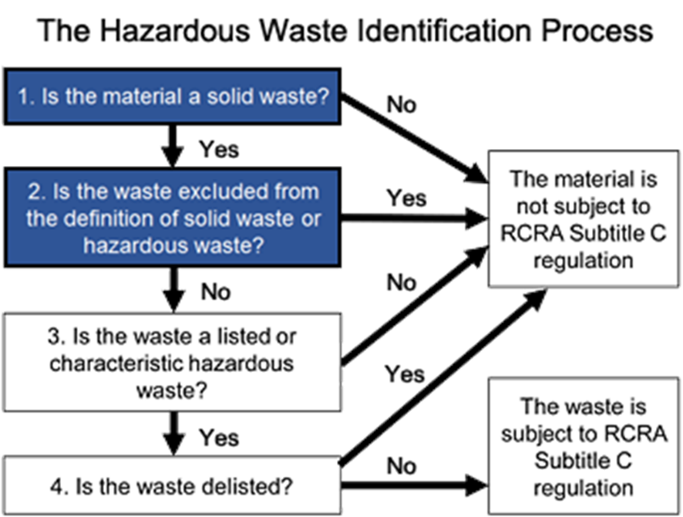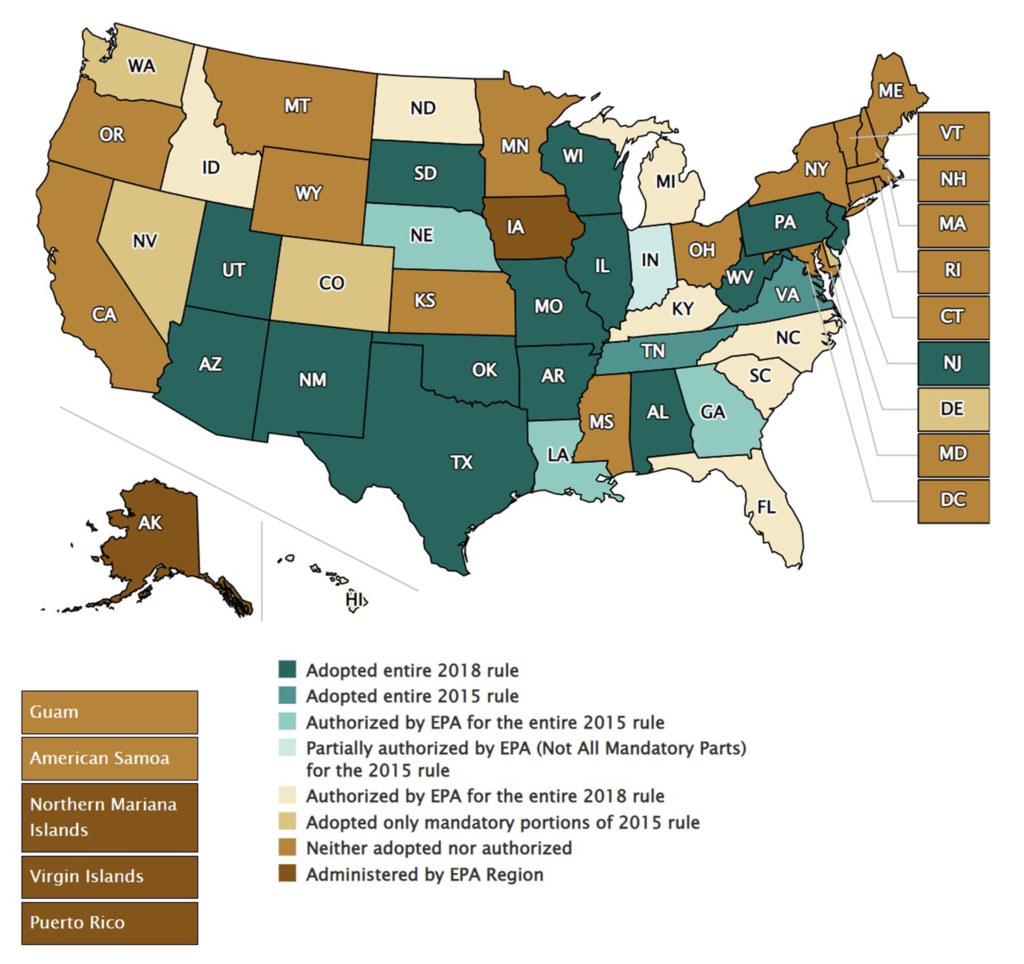USEPA has long held an interest in promoting responsible Hazardous Waste Recycling by providing various exclusions in the Resource Conservation Recovery Act (RCRA) to allow for generators and other stakeholders to reuse/recycle and reclaim Hazardous Wastes.
Wastes excluded from Hazardous Waste Regulation:

To encourage hazardous waste recycling, RCRA excludes three types of what we would consider to be Hazardous Wastes from the definition of solid waste:
261.2 Use/Reuse
- Used as an Ingredient: If a material is directly used as an ingredient in a production process without first being reclaimed, then that material is not a solid waste.
- Used as a Product Substitute: If a material is directly used as an effective substitute for a commercial product (without first being reclaimed), it is exempt from the definition of solid waste.
- Returned to the Production Process: When a material is returned directly to the production process (without first being reclaimed) for use as a feedstock or raw material, it is not a solid waste.
In October 2008, EPA published a final rule revising the definition of solid waste by promulgating two exclusions:
- one for hazardous secondary material recycled under the control of the generator (the generator-controlled exclusion, currently found at Title 40 of the Code of Federal Regulations, or CFR, in section 261.4(a)(23)),
- and one for hazardous secondary material transferred to a third party for recycling (the transfer-based exclusion, currently found at 40 CFR sections 261.4(a)(24) and (25)). The 2008 DSW rule also codified a definition of legitimate recycling.
In January 2015, EPA revised the 2008 final rule by, among other things, (1) replacing the transfer-based recycling exclusion with the verified recycler exclusion, and (2) strengthening the definition of legitimate recycling.
The United States Court of Appeals for the District of Columbia Circuit issued a decision on the 2015 final rule on July 7, 2017 and amended it on March 6, 2018. These orders
- vacated the 2015 verified recycler exclusion (except for certain provisions) and reinstated the transfer-based exclusion from the 2008 rule to replace it;
- upheld the containment and emergency preparedness provisions of the 2015 rule, thus including them in the reinstated transfer-based rule;
- vacated the fourth factor of the 2015 definition of legitimate recycling and reinstated the 2008 version of the fourth factor to replace it.
Hazardous Secondary Materials Exclusions:
In January 2015, EPA revised the 2008 final rule by, among other things, (1) replacing the transfer-based recycling exclusion with the verified recycler exclusion, and (2) strengthening the definition of legitimate recycling.
The United States Court of Appeals for the District of Columbia Circuit issued a decision on the 2015 final rule on July 7th 2017, and amended it on March 6th 2018. These orders
- vacated the 2015 verified recycler exclusion (except for certain provisions) and reinstated the transfer-based exclusion from the 2008 rule to replace it;
- upheld the containment and emergency preparedness provisions of the 2015 rule, thus including them in the reinstated transfer-based rule;
- vacated the fourth factor of the 2015 definition of legitimate recycling and reinstated the 2008 version of the fourth factor to replace it.
Transfer Controlled Exclusion
- Generator transfers the Hazardous Secondary Material to another entity for reclamation.
- Generator needs to perform due diligence to make sure the receiving facility has the necessary equipment safely and compliantly reclaim the HSM and manage the residues.
- Receiving facility must provide financial assurance
- Receiving facility can’t have had any RCRA violations in the past 3 years
Adoption by the States
- One potential impediment is that the individual states with authorized programs must adopt it (automatically adopted in Alaska and Iowa)
- Many states adopted the HSM based on the 2015 Definition of Solid Waste but have not adopted the 2018 version.
- If transferring from one state to another, both states must have adopted the HSM regulations
- Some states may require additional notifications and reporting
Issue Posed by Uneven State Adoption
To realize the full benefits of the rule, both the origin state and the delivery state must have adopted the rule. This is a barrier to commerce and environmental progress.
- As an example, a manufacturer in Massachusetts may have a waste stream of a reclaimable solvent along with water. The water content lessens both the value and practicality of sending this material off-site for direct re-use. A manufacturing entity in New Jersey may have a need for the solvent and the capability to remove the water prior to using in operations. New Jersey has adopted the referenced rule, however Massachusetts has not thus making this possible circular transaction regulatorily impossible
States Where the Definition Is in Effect


